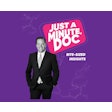
DrBicuspid.com is pleased to bring the expertise of noted practice management consultant and speaker Jan Keller to you on a monthly basis. She'll explore the "blind spots" of your practice: how to recognize them, how to deal with them, and how to benefit from the experience of your colleagues. In this column, she looks at how you can improve your hiring process.
Does your practice have trouble finding and retaining top staff? If so, you're not alone, and there is a good reason this is happening. Too often, the typical hiring process in a dental office goes something like this:
 Jan Keller.
Jan Keller.- Place an ad or put the word out that you have a position available. Do not be specific about what you need -- the more bodies you hear from the better.
- Interview the first three or four candidates who call or send a resume, regardless of the quality of that interaction (for instance, the candidate has poor verbal skills, or the resume is far less than perfect).
- Hire the best of the three or four you meet. The candidate is not perfect, but surely they will see how your office works and learn to fit in. And hey, you need someone now!
- Put new employee to work immediately, without adequate training or orientation (who has time?).
- Lose new employee in less than three months because he or she is not a good fit for your practice, or is causing resentment or stress among other staff members.
- Give the employee a large "pay off" because you, the doctor, feels guilty.
- Start over again at No. 1.
Why does this happen time and time again? My experience is that, even today, dentists attend dental school because they want to help people, but they get very little or no education in managing, creating, and running a small business. Most are very creative and possess impressive skills in helping patients improve or restore their dental health, but they simple don't know how to manage people or do all that annoying nonclinical stuff.
The following is a typical conversation that I've heard it often. Dr. Smith is calling again to discuss his new hire, Betty, and why she just isn't working out. After listening to him vent about what she is not doing and how the staff is rebelling, I attempt to peel back the layers of the "onion" to discover what method(s) he used during his hiring process, and why he ultimately decided to hire Betty.
Doctor: "Betty told me she had a lot of experience in block/productive scheduling. Some days we are swamped and feeling overwhelmed, but it is a day filled with nonproductive procedures, and other days, the schedule is a bust with very little production. Quite frankly, I don't see the experience."
Me: "What other things have you upset or concerned?"
Doctor: "Well, Betty told me that she had a lot of experience in accounts receivable and had gotten the A/R for her former employer to over 99%."
Me: "Tell me more."
Doctor: "Well, again, I'm concerned because my end-of-day reports are not balancing and she appears to be very disorganized at the front desk. She won't let anyone help her and resents having direction. Quite frankly, my staff doesn't trust her and everyone is so unhappy I hate coming to work."
Me: "What is the bottom-line reason you hired her?"
Doctor: "If I'm honest, I was feeling desperate to fill the position and she was cute!"
Does this sound familiar to you? Do you have a similar "hiring process" in your practice? If so, you probably understand exactly how Dr. Smith is feeling, and why he dreads coming to work.
It does not have to be that way. Let's explore a simple four-step process to put an end to this revolving-door hiring process once and for all.
The four steps I stress when speaking on the topic of hiring, whether as a speaker at a meeting or study club, or working with individual clients are clarify, screen, select, and integrate (CSSI). I refer to it as "forensic hiring." Here is a brief outline of what this involves:
- Clarify the position for which you are hiring.
- Have clearly defined and written job descriptions based on the core values of the practice, including communication, decision-making, and emotional intelligence. Ask yourself: What kind of person will be a good fit for my practice?
- Write a creative ad to elicit the best applicants for the position.
- Use behavior-based questions during the applicant screening process.
- Conduct a skills assessment.
- Get your team involved in the screening phase.
- Perform background and reference checks during the selection process -- a must.
- Finally, have a detailed training, integration, and orientation plan in place to help the chosen applicant quickly become a productive member of the team.
Although this process does take more time and energy than the "any warm body" process you may have been using, your chances of finding the right person the first time is greatly enhanced. And taking a little more time upfront can save you thousands of dollars and hundreds of hours in lost time and production.
Jan Keller has more than 25 years of experience in dentistry as an office manager and a software trainer. Now, as a practice management consultant, she provides customized practice development and education to clients and their teams. She is certified by Bent Ericksen & Associates in employee law compliance and also by the Practice Management Institute.
The comments and observations expressed herein do not necessarily reflect the opinions of DrBicuspid.com, nor should they be construed as an endorsement or admonishment of any particular idea, vendor, or organization.



















